Introduction
The Emperor Qinshihuang’s Mausoleum Site Museum, located in Xi’an, Shaanxi Province, China, is one of the most remarkable archaeological sites in the world. Famous for the discovery of the Terracotta Army, this UNESCO World Heritage Site attracts millions of visitors each year. Built for Qin Shi Huang, the first Emperor of a unified China (259–210 BCE), the mausoleum represents ancient Chinese artistry, engineering, and cultural beliefs about the afterlife.
History of the Mausoleum
Construction of the mausoleum began in 246 BCE, when Qin Shi Huang was just 13 years old, and continued for nearly four decades. Historical records state that over 700,000 workers participated in its construction.
The site remained hidden for more than 2,000 years until 1974, when local farmers discovered life-sized clay soldiers while digging a well. This led to one of the most important archaeological discoveries of the 20th century—the Terracotta Army.
The Mausoleum Complex
The museum covers an area of nearly 56 square kilometers, making it one of the largest imperial tombs in the world. The central tomb of Emperor Qin Shi Huang remains unexcavated due to concerns over preservation, but surrounding pits and halls offer extraordinary insight into ancient China.
The site includes:
-
The Emperor’s Burial Mound – A pyramid-shaped hill where the emperor is believed to rest.
-
The Terracotta Army Pits – Thousands of life-sized clay warriors and horses.
-
The Museum Exhibitions – Artifacts, weapons, and cultural relics.
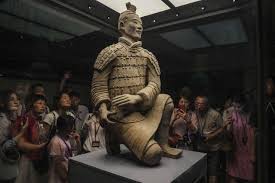
The Terracotta Army
1. Pit 1 – The Main Army
-
Discovered in 1974.
-
Houses over 6,000 life-sized figures, including infantry, cavalry, and chariots.
-
Each soldier has unique facial features and expressions.
2. Pit 2 – Specialized Troops
-
Contains cavalry, archers, and chariots.
-
Demonstrates advanced military formations of the Qin Dynasty.
3. Pit 3 – The Command Center
-
Smaller in size, believed to represent the army headquarters.
-
Includes high-ranking officers and ceremonial weapons.
4. Bronze Chariots and Horses
-
Intricate bronze models used for ceremonial purposes.
-
Showcases the craftsmanship of ancient Chinese metallurgy.
Significance of the Mausoleum
The mausoleum reflects ancient Chinese beliefs about the afterlife, where the emperor would continue to rule eternally. The Terracotta Army served as guardians, protecting him in death as they did in life.
It also provides valuable insights into:
-
Military Organization – Troop formations and armor.
-
Artistry – Sculpting, painting, and weapon-making skills.
-
Cultural Heritage – Burial customs of the Qin Dynasty.
Visiting Emperor Qinshihuang’s Mausoleum Site Museum
Location
-
Situated in Lintong District, Xi’an, about 40 kilometers east of downtown Xi’an.
Opening Hours
-
March to November: 8:30 AM – 5:30 PM
-
December to February: 8:30 AM – 5:00 PM
Admission Fees
-
Adults: ¥120–150 (varies by season)
-
Students and Seniors: Discounts available
-
Children under 1.2 meters: Free
Things to Do at the Museum
-
Explore the Terracotta Army Pits – The highlight of the museum.
-
Visit the Exhibition Halls – Displays artifacts such as bronze weapons, armor, and pottery.
-
See the Bronze Chariots – Stunningly detailed miniature chariots with horses.
-
Tour the Mausoleum Park – Walk around the burial mound and surrounding gardens.
-
Watch Multimedia Shows – Learn about the history of Qin Shi Huang and the Terracotta Army.
Best Time to Visit
-
Spring (March–May) – Pleasant weather for exploring.
-
Autumn (September–November) – Mild temperatures and fewer crowds.
-
Summer can be very hot, and winter brings cold winds, but the site remains open year-round.
How to Reach the Museum
-
By Bus: Tourist Bus No. 5 (306) from Xi’an Railway Station.
-
By Metro: Line 9 to Huaqing Pool, then a short bus ride.
-
By Taxi/Car: About 1 hour from downtown Xi’an.
-
By Tour Packages: Many guided tours include transportation and entry.
Accommodation Near the Museum
-
Xi’an City Center Hotels – For those wanting nightlife, shopping, and dining.
-
Lintong Hotels – Closer to the museum, convenient for early visits.
-
Luxury Options – International chains like Sofitel and Hilton in Xi’an.
Travel Tips for Visitors
-
Buy Tickets Online to avoid queues.
-
Arrive Early to see the pits before peak crowds.
-
Hire a Guide for historical insights.
-
Wear Comfortable Shoes as the site is vast.
-
Avoid Touching Exhibits – Respect preservation efforts.
-
Photography Allowed – But flash is prohibited inside the pits.
Fun Facts About the Mausoleum
-
No two Terracotta soldiers are identical.
-
The figures were originally painted in bright colors, but most pigments faded after excavation.
-
The army includes not only soldiers but also horses, chariots, acrobats, and musicians.
-
The central tomb remains sealed—ancient texts suggest rivers of mercury may lie inside.

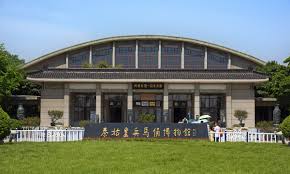
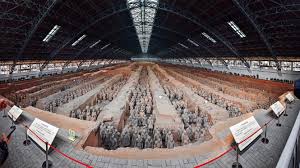
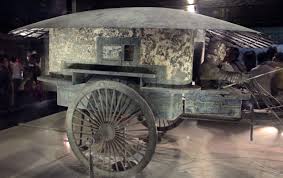
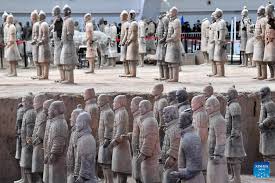
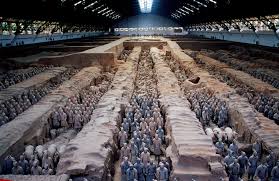
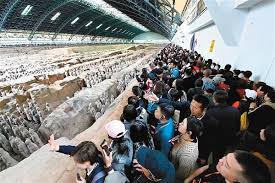
You must be logged in to post a comment.